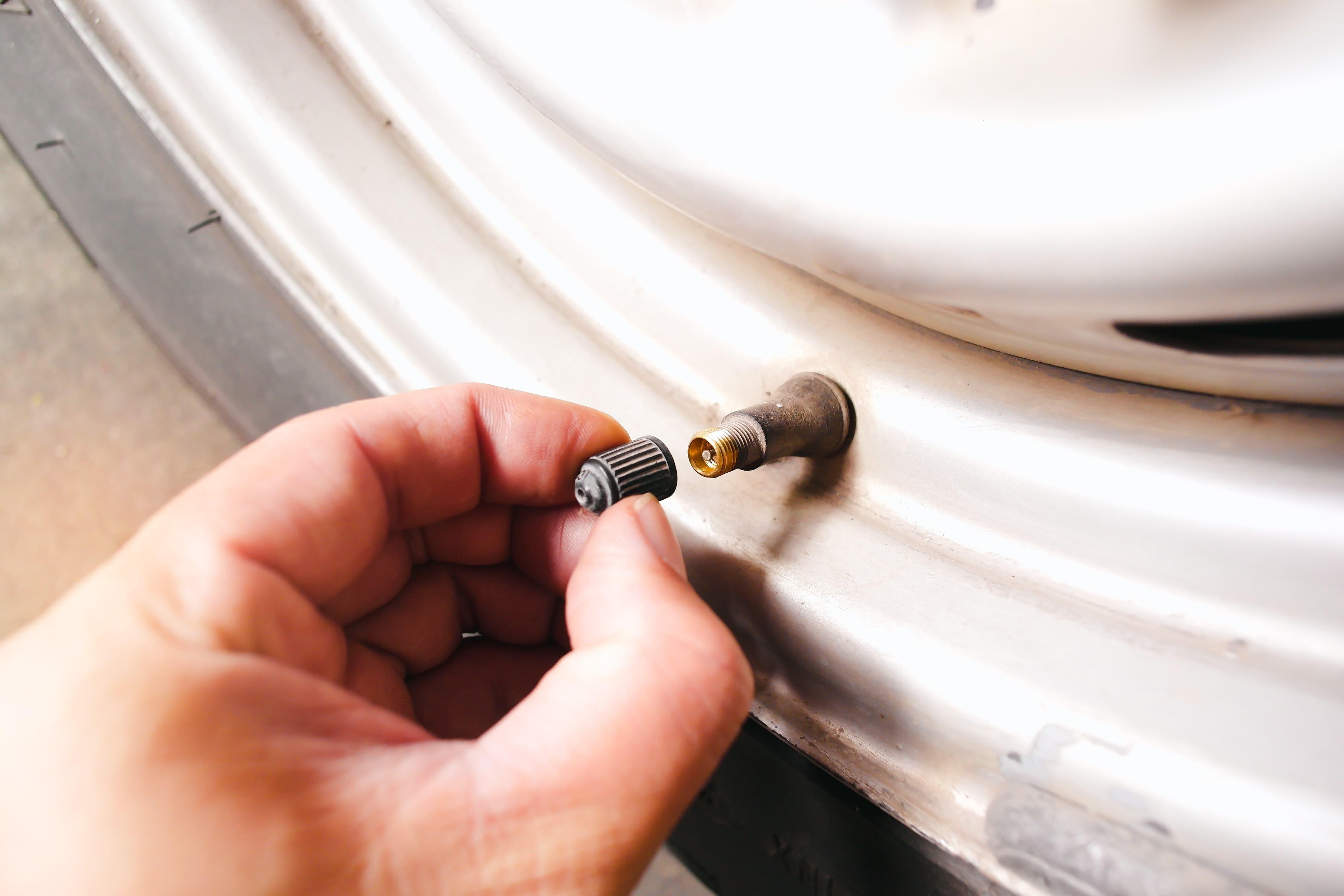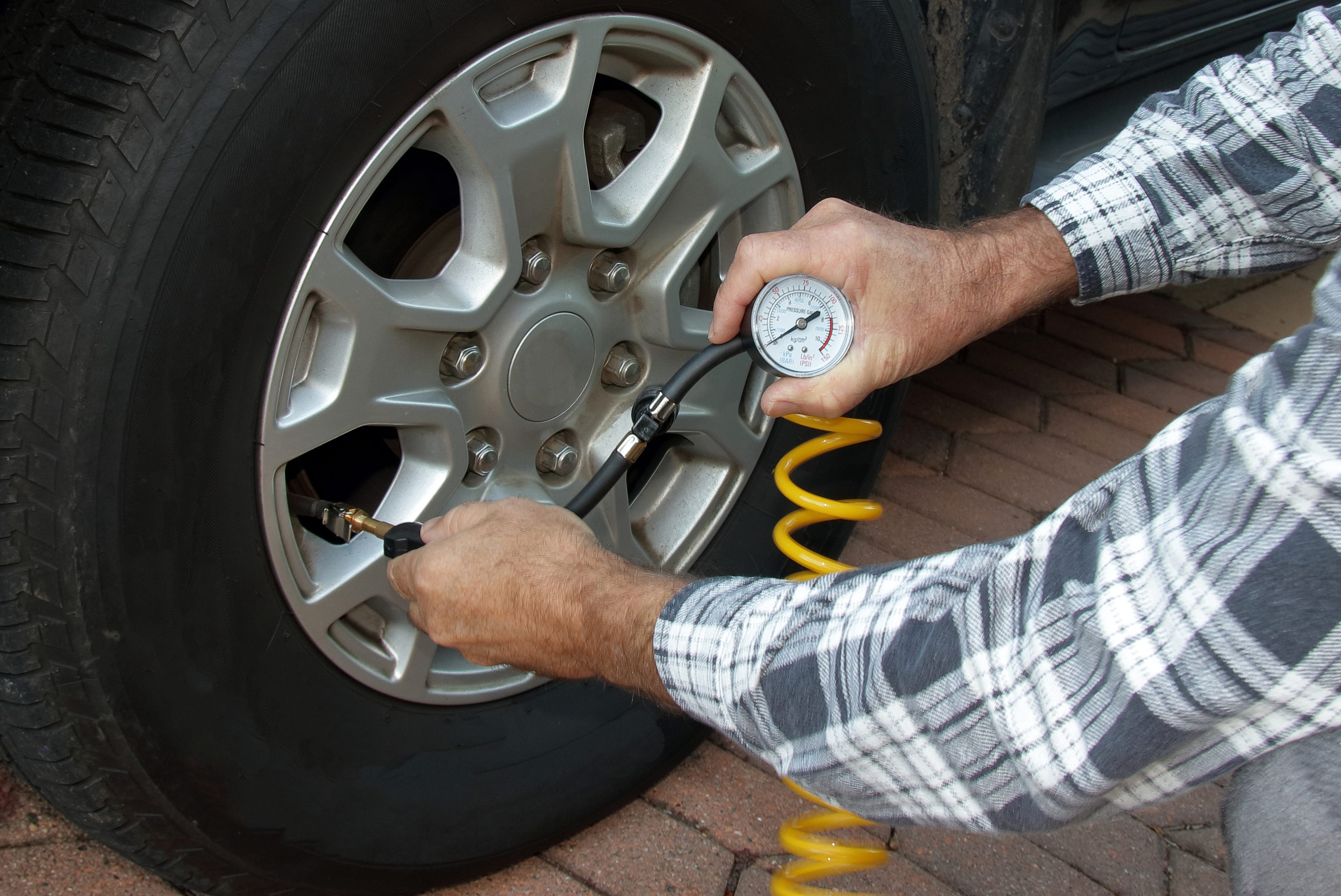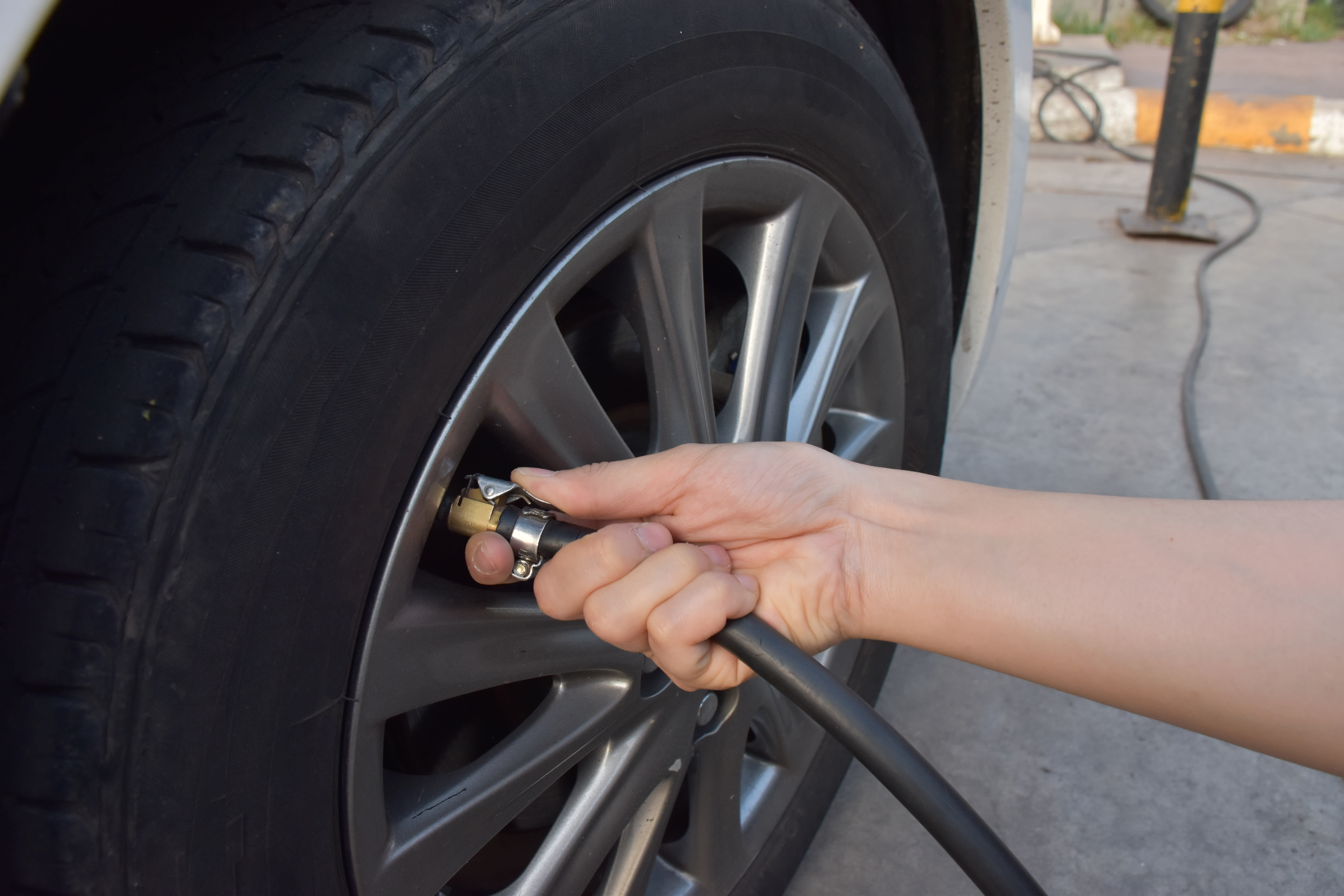Tire Maintenance & Safety
How to Put Air in Tires

Tire Maintenance & Safety

Air pressure of your tire controls safety, comfort, tread life, gas mileage, and so much more. If a tire is low on air, the sidewall below will begin to compress. If you notice that a portion on one tire is smaller than the others, you know you need air.
However, you might not be able to tell if all four tires are running low on air unless you’re very familiar with how the tires look normally. Fortunately, your TPMS sensor should light up on your dashboard when it’s time to put air in your tires, and that’s a good indicator that it’s time to find a gas station or somewhere else to fill up. Once you’ve arrived, locate the air pump and find the correct PSI for your vehicle on your driver side door jam.
Now follow the below mentioned detailed steps to accurately on how to put air in tires.
You will just need a handful of tools to help you with.
How to put air in your tires is a straightforward process, but doing it correctly is vital. Follow the steps to understand how to put air in tires at a gas station.
Important: Just one drop in PSI can lower your gas mileage by about 0.2%. For every 3-4 PSI units that your tire is underinflated, you are burning around 1% more fuel.
At times we find out that you have a broken valve once we are at a gas station. Here is a process to explain how to put air in a tire with a broken valve stem.
You might also find out that your vehicle does not have a gauge or you have left it at home (yikes!). Follow the above process, but instead of waiting for a beep, inflate the tire for 5-10 seconds.

After unscrewing your valve stem, make sure to place it in your pocket. These little caps are easy to drop and lose track of.

Break out your tire pressure gauge and press it onto the valve stem. Make sure there are no leaks when you do, as they will throw off your reading. You know there’s a leak when you hear a hissing noise – this is air escaping. Attach the end of the compressor hose to the valve on your tire.

Once the air compressor is attached securely, turn it on. It is very important to see that your air hose is clean, and not ripped, torn or overused.
If your tire pressure is out of spec, simply adjust the tire pressure. To add, simply connect the airline to supply air. If there’s too much air, you will need to release it. Doing so is achieved with the dimple on the rear of your pressure gauge that depresses the valve stem or the pressure release button.
Once you are done filling the gas as per the desired PSI Level. Make sure to look for any irregularities in your pressure reading that may signify a leak. If everything is all right, turn off the air compressor and remove the hose.
Rinse and repeat the process for all five tires (don’t forget the spare!) to ensure all are to spec and safe to drive on.
How to put air in tires is a straightforward process, and putting the correct amount of air in your tires is vital to your tires’ performance. Whether you’re putting air in your tires at a gas station or somewhere else, the above step by step guide can save you time and money in the future. Just remember to make sure that you don’t over or under inflate your tires, as both can lead to reduced traction or a blowout.
How much air you should put in your tires can be found on the driver’s side door jam. Typically, this number will be above 30 PSI and could be over 50 if you have a larger truck.
If there's no sticker on the door, you can usually find the specs in the owner's manual. Most passenger cars will recommend 32 to 35 PSI.
Search By